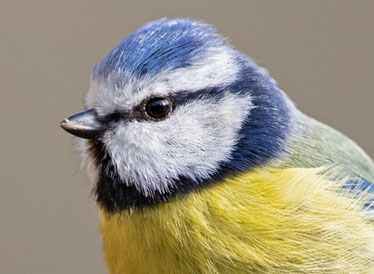According to zoologist and wildlife photographer Mark Carwardine, an estimate made last year suggested that 9 million people in Britain bird watch occasionally or often. We are, it would appear, a nation of ‘Twitchers’. But how much do we know about the birds around us? And how easy is it to use cameras to immortalise these encounters?
“Since lockdown, I think many more people have started appreciating common birds,” says Mark, famed for co-presenting the BBC documentary series Last Chance to See with Stephen Fry, and who has written a book entitled Camera Settings for Wildlife Photographers. “We’ve got some amazing birds in this country that we get in gardens, many of which look really exotic.”
Why does birdwatching remain such a passion?
“One of the reasons is because birds are accessible. Lots of people love mammals, but how often do you actually get to see a badger or a deer? When it comes to birds you’ve just got to look up and there they are. And you can watch them all year round – any day, month, or season.”

What can we expect to see during the rest of the year?
“There’s never a dull moment for bird watching. It does vary a lot, of course, but paying attention to when certain species appear teaches us to tune into the seasons. August is the last month we’re going to be seeing regular swallows, swifts and house martins, which will be migrating elsewhere – likewise with cuckoos. This is a fantastic time of year to be seeing the younger birds out there that have left their nests. As we head into autumn and winter, the make-up of the birds in our gardens changes, with some arriving from the continent and Scandinavia. It’s a good time for big swirling flocks of starlings or winter wading birds. It’s a constant state of flux.”
Does bird watching have health benefits?
“100% – and there’s been a lot of research on ‘ecotherapies’, as they’re called, and how they can help people with anxiety and stress. All of the results have shown that it has a massively positive effect. Even listening to bird song – not even watching them – can lower your blood pressure and calm you down. I’ve found myself, with grief, that being outside with nature is very beneficial.”
Even just listening to bird song can lower your blood pressure and calm you down.
How can people optimise gardens for birds?
“Food, like nut baskets and seed baskets, provided on bird tables is obviously important. As is feeding birds all year round, as they need food for different reasons at different times of year. Young birds will be out now fending for themselves, so food will provide them with that extra boost they need. Meanwhile, adults are recovering from the breeding season, so they need extra help too. During winter, choose high fat foods, as the feeding days are shorter and the nights are colder. And don’t forget water, such as a bird bath.
“The key thing is to keep feeding – don’t suddenly stop. If birds come to rely on the food you’re providing and then you stay with family for a week, the birds will suddenly have nothing to eat. Brits are fantastic at feeding birds – there have been studies done suggesting that by feeding birds in our gardens we’re keeping 200 million birds fed. The total amount people spend on bird food every year in Britain is £300 million!”
What should people remember when feeding birds?
“They’re versatile eaters, so anything like peanuts, sunflower hearts, mealworms and raisins is great. The one rule is: don’t give whole peanuts, as birds might choke. Put them in feeder, so they get broken up. If you’ve got squirrel problems, which I do in my garden, then mix hot chilli powder in with the food. It does the birds no harm because they can’t taste it, but the squirrels won’t come back.”
If you’ve got squirrel problems, mix hot chilli powder in with the food. It does the birds no harm but the squirrels won’t come back.
Which species will people commonly see in their gardens?
“With some species it varies based on where you are, what you’re feeding them, and what the garden is like. Meanwhile, there are many species that are in gardens up and down the country.
“House sparrows are a species that we used to take for granted but have gone through a period of massive decline, having lost about 70% of their numbers because of pesticides and lack of food. Thankfully they’re experiencing a renaissance now, with numbers increasing. There are also blackbirds, probably the most common garden bird in Britain, which has one of the most melodious songs. You can also get various types of finches and jays, magpies, rooks, carrion crows and jackdaws. If you're lucky you might get a great spotted woodpecker [see image at very top of page].”

European robin
“The robin is probably the most popular of all of them, and certainly the most familiar. It was recently voted Britain’s national bird. They’re very tame and approachable so you may find them right next to your feet when you’re out in the garden. Despite seeming very sweet, they’re like little warriors with one another – the males fight like mad over territory.”

Common starling
“They're amazingly beautiful birds. If you glance at a starling it looks like it's a flat black colour. Look more closely, however, and you'll notice it's got these amazing glossy, iridescent feathers that appear green and purple, much like the different colours you'll see shimmering in petrol. They are definitely a species to photograph, so you can see some of the features you won't necessarily always see with the naked eye.”

Eurasian blue tit
“We’re so used to them that don’t always appreciate how lovely they are to look at. If you just sit and watch them for 10 minutes while you have a coffee, you’ll see how busy they are, restlessly flapping around and rarely settling anywhere for more than a few seconds, especially in the summer. This is because one pair of blue tits would need to find roughly 1,000 caterpillars every day in order to feed 6-7 chicks in the nest.”
There are apps now that allow you to take pictures remotely using a mobile phone.
What's the best way to start photographing birds?
“A camera with a tripod is a useful way to take pictures, but there are also apps now that allow you to take pictures remotely using a mobile phone, so you don't need loads of special equipment. If you have a table and chairs in the garden, the birds will quickly get used to you being there, so you can sit among them and snap away.
“A really simple technique for photographing them is to set up your feeder several feet away from a hedge or a bunch of plants and put a little perch sticking out of that hedge or those plants right opposite the feed. What you'll find is that birds will queue up on the branch, waiting for it to be their turn. This makes it much easier for you to take pictures of every bird that lands on the branch. If you put the set up near enough the house, you can do it from the kitchen window.
“The next step, if you want to advance things, is to try and get a picture of the birds flying between the branch and the feeder. You should therefore aim to take a picture every time you see one take off from the branch to capture them in various stages of flight.”
Hobbies and pastimes
Hobbies are important as they can provide a sense of wellbeing and purpose. Perhaps you enjoy cooking? Maybe you like tending to the garden? Whatever you're into, we've got lots of information and advice to inspire your interests.
Many thanks to Mark for providing the images for this article from his own collection.

